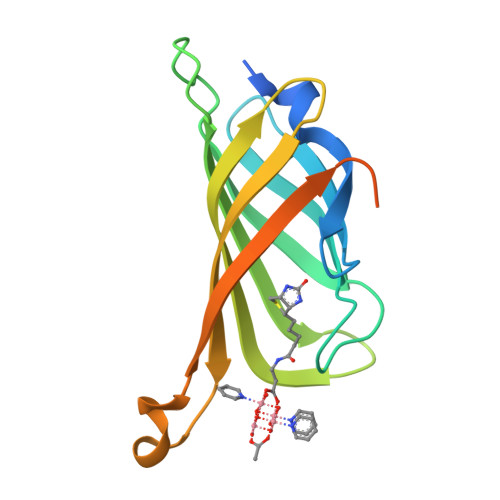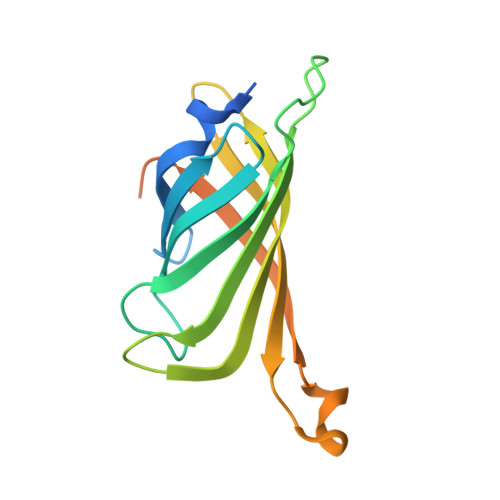Artificial Metalloproteins Containing Co
Olshansky, L., Huerta-Lavorie, R., Nguyen, A.I., Vallapurackal, J., Furst, A., Tilley, T.D., Borovik, A.S.(2018) J Am Chem Soc 140: 2739-2742
- PubMed: 29401385
- DOI: https://doi.org/10.1021/jacs.7b13052
- Primary Citation of Related Structures:
6AUC, 6AUE, 6AUH, 6AUL, 6AUO - PubMed Abstract:
Artificial metalloproteins (ArMs) containing Co 4 O 4 cubane active sites were constructed via biotin-streptavidin technology. Stabilized by hydrogen bonds (H-bonds), terminal and cofacial Co III -OH 2 moieties are observed crystallographically in a series of immobilized cubane sites. Solution electrochemistry provided correlations of oxidation potential and pH. For variants containing Ser and Phe adjacent to the metallocofactor, 1e - /1H + chemistry predominates until pH 8, above which the oxidation becomes pH-independent. Installation of Tyr proximal to the Co 4 O 4 active site provided a single H-bond to one of a set of cofacial Co III -OH 2 groups. With this variant, multi-e - /multi-H + chemistry is observed, along with a change in mechanism at pH 9.5 that is consistent with Tyr deprotonation. With structural similarities to both the oxygen-evolving complex of photosystem II (H-bonded Tyr) and to thin film water oxidation catalysts (Co 4 O 4 core), these findings bridge synthetic and biological systems for water oxidation, highlighting the importance of secondary sphere interactions in mediating multi-e - /multi-H + reactivity.
Organizational Affiliation:
Department of Chemistry, University of California, Irvine , Irvine, California 92697, United States.



















